
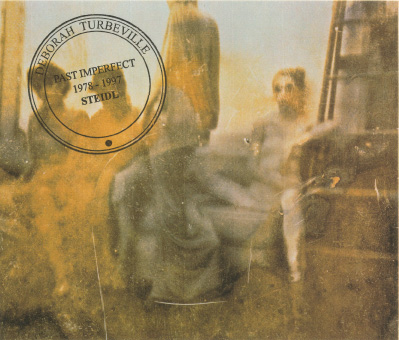
Past Imperfect by Deborah Turbeville published by
Steidl

Deborah Turbeville is an incorrigible romantic. Working since the early 70s as a fashion and art photographer, she developed an ethereal style, characterized by grainy, washed out, black and white images. Turbeville’s new book, Past Imperfect (Steidl, $59), is a careful study of her favorite subject: women in search. Laid out in fifteen vignettes on 190 pages, with locations ranging from coastal Rhode Island to the back alleys of Prague, the book depicts her heroines’ strife to transcend their banal existence, to seek whatever little grain of poetry can be found in their prosaic world. The photographs were taken between 1978 to 1997, some borrowed from her fashion shoots, others taken to complete her narrative of alienation.
Turbeville has a deep affinity to literature, which is easily discernable in Past Imperfect. It is no wonder that many of her models are Russian and French, the Anna Kareninas and the Madame Bovarys of her time. The book’s title refers to a quote from Proust’s article on Flaubert, which talks about the “mysterious sadness” of the past imperfect tense that insists on continuity of the past. This sense of lingering permeates Turbeville’s moody photography, in which time is not readily discernable; the photos could have been taken in 1890 or 1980. Turbeville writes about her women in the preface of the book: “I saw in them the ancient faces from a distant past… Anachronisms — walking through the streets of the present. They shared common bonds… Something of the endangered species told in their presence…”
(more…)

Gestalten Books

You have to wonder if tea tastes better when sipped in the Too-High Teahouse outside Chino City in Nagano, Japan. It’s a small, whimsical building supported by two chestnut tree trunks. The altitude is meant to have a calming effect on guests. The teahouse’s style is what you could call rustic chic. Or woodsy eclecticism. It’s featured in Arcadia: Cross-Country Style, Architecture and Design (Gestalten; $75), a coffee table book about recent buildings and furniture which are surrounded in, and/or inspired by, nature. The book also showcases faux-rustic bowls and utensils, making some sections seem like a housewares catalog for affluent dwarves. (Dutch designer Jo Meesters’s pitchers made of paper pulp and resin are the best of that group.)
(more…)
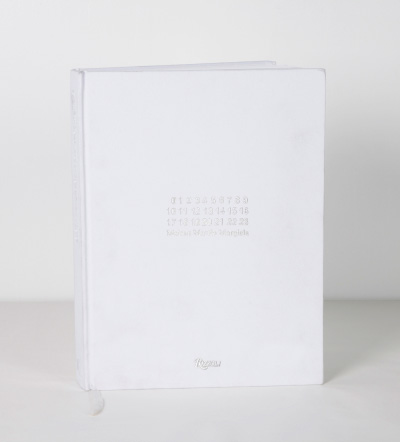
© Maison Martin Margiela by Maison Martin Margiela

Last year, the iconic Belgian designer Martin Margiela celebrated the twenty-year anniversary of his fashion house during his runway show in Paris. One person conspicuously absent from the celebration was Margiela himself. The designer is as notorious for his adamant refusal to be photographed and interviewed, as he is for his innovative work. One can hardly underestimate Margiela’s influence on fashion. From revealing tailoring techniques by deconstructing garments to his quirky shows, like the one held in a candle-lit abandoned Parisian metro station, he has consistently subverted fashion’s conventions. Margiela is a thinking person’s designer — his work is cerebral and methodical. Whether through the subtlety of carefully misplaced seams or the ostentation of blown-up proportions, he forces you to see the clothes in a new light.
Maison Martin Margiela (Rizolli, $100), chronicles the Belgian’s career in its 368 large format pages, full of rare images. The pure white linen cover of the book epitomizes Margiela’s approach to fashion — the garment should speak for itself and not be overshadowed by the designer’s ego. Several essays and letters from contributors such as Jean-Paul Gaultier (with whom Margiela got his first job), Susannah Frankel, and Vanessa Beecroft punctuate the lush photography. The photos depict every important aspect of Margiela’s carefully constructed world, from individual garments to his pointedly unglamorous boutiques.
(more…)
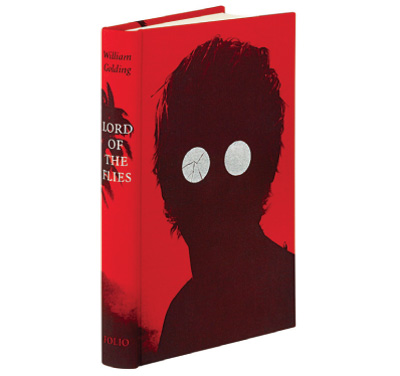
Lord of the Flies cover and illustrations by
Sam Weber.

“Maybe there is a beast…maybe it’s only us.” First published in 1954, William Golding’s Lord of the Flies became an instant classic for its unrelenting, often horrifying portrayal of human nature, primitive instinct, and the disintegration of civilization. This winter, The Folio Society breathes fresh life into the polemical novel with a cloth-bound illustrated edition that both art fans and bibliophiles will appreciate. The project was truly a dream job for Alaskan-born illustrator Sam Weber whose visceral imagery lends the fable a contemporary level of pathos not yet explored in previous illustrated editions. At once understated and formidable, each painting is a reminder of how fragile the infrastructure of society can be in the midst of true evil. Sam Weber was kind enough to offer PLANET a few moments of his time for this exclusive interview.
(more…)


The next time you’re in Luckenwalde, Germany (population 21,000) make sure to visit the local library. It’s weird-looking. The town’s former train station was rehabilitated and repurposed by the firm FF-Architeckten. The children’s section is housed in a modern addition: a tilted rectangle covered in gold scales. The scales are supposedly meant to resemble dragon skin — the same dragons chasing around maidens and knights in the fairytales kids are reading inside. The old train station is plain and traditional; the new wing is anything but. So does it jive? Sure! It’s saying, “This new shiny area is for children. That old gray building is for grandpa.” And any addition with a clever message is good enough for us. It was also good enough for editors Robert Klanten and Lukas Feireiss, who chose it for their book, Build-On: Converted Architecture and Transformed Buildings (Gestalten; $75). Considering that a modern addition on a beloved older building is one thing that will get the average person really pissed at (or at least talking about) architecture, it’s a subject worth exploring and cataloging.
(more…)
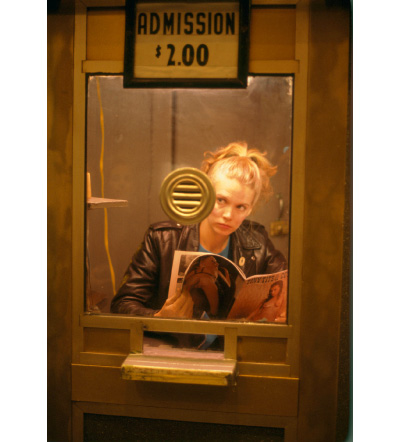
Photography courtesy of Rizzoli New York

In the 1980s, photographer Nan Goldin rose to prominence with The Ballad of Sexual Dependency, an ambitious body of work that depicted the underbelly of New York’s East Village and Lower East Side. Shot with minimal equipment in low-light conditions, featuring depictions of drug use, sexual liaisons, and domestic violence, Ballad ushered in a style known as the “snapshot aesthetic” and influenced a whole generation of younger artists. In an era of Facebook and Snapfish, it’s easy to overlook Goldin’s significance — but in its time, Ballad was as bold and original as artistic statements get.
As talented as she is, Goldin would have been nothing without the extensive network of friends and fellow artists who served as her subjects. One of her friends was Bette Gordon, an up-and-coming filmmaker who, in 1983, asked Goldin to document the making of her film Variety. Gordon and Goldin were both members of No Wave, a loose coalition of avant-garde filmmakers and musicians on the Lower East Side. Intensely collaborative, the No Wave artists shared ideas and equipment, played music and acted and lived together in the neighborhood’s famous cold-water walk-ups.
(more…)
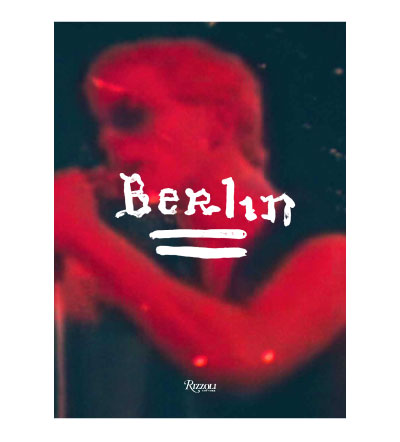

West Berlin was ripe with glam rock, urban blight, and Baader-Meinhof terrorists in the 1970s. A walled city cut off from the West, its inhabitants simmered in a pressure cooker of art, drugs, and leftist politics, so it’s no surprise the place captured Lou Reed’s imagination. Back then, he had never set foot in Berlin, but the city became his muse for a while; its dilapidated post-war rubble, drug-fueled dysfunction, and the massive concrete wall that ran through its heart inspired a story. Except for Reed, the story was about the walls that come between people or, more specifically, couples.
The Berlin in Reed’s mind took on operatic proportions, as did the album he named for the city, which chronicles the rise and fall of a love affair, and the requisite drugs, domestic abuse, sex, and suicide you can expect from the patron saint of the underground. Over the course of Berlin’s ten songs, things go from bad to worse for the narrator as his love, Caroline, does too many drugs, goes a little nuts, and tries to kill herself.
When Berlin was released in 1973, it achieved zero critical success, but thirty-three years later its moment arrived. Reed’s homage to dysfunctional love and self-destruction finally got its due in 2006 when he performed the album in its entirety with a thirty-five-piece ensemble at a warehouse in Brooklyn. Artist/filmmaker Julian Schnabel captured it all on film, and now Rizzoli has captured the film in a book.
(more…)
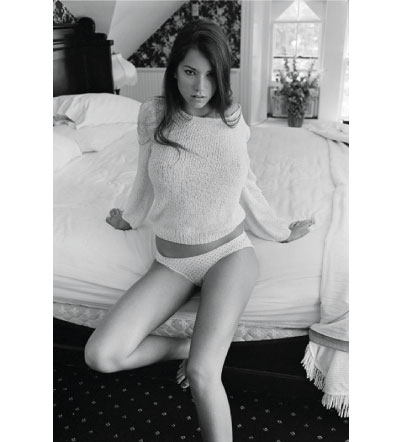
Photography courtesy of Jonathan Leder

The great American pin-up is back, in a freshly minted magazine straight out of Brooklyn. Jacques, a quarterly art and “nudie” mag (in the classic retro sense of that term), is composed at least as much of nostalgia as it is of paper and ink. Founded by editor Danielle Luft, Jacques does a good job of blending mostly ’60s and ’70s aesthetics with a bygone nudie innocence that feels quaint and even incongruous to our times — in a good way. In an era when porn proliferates and has been embraced by every cultural medium from art to filmmaking to music and so on, when you can download double and triple penetrations right into the privacy of your home — or work cubicle — there’s something unexpectedly wholesome, even downright respectable about a naked girl dallying in an open field. Jacques hits on a longing, both among women and men, for sweet, charming, debonair smut. And Jacques delivers.
(more…)
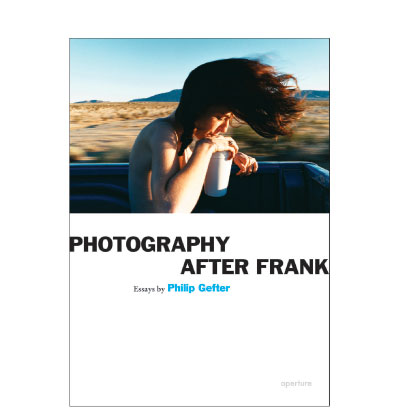

Throughout history there are distinct turning points, an indelible before and after, like the discovery of electricity or onset of the Internet age. Back in 1959, one of those moments occurred when Robert Frank’s seminal tome, The Americans, forever changed the landscape of modern photography. As mentioned in a previous PLANET post, that same collection of photos is currently criss-crossing the country in celebration of its 50th anniversary, so it’s only fitting that a discussion about Frank’s relevancy continues. Philip Gefter’s new book Photography After Frank does just that. In over three dozen essays, the New York Times writer and former picture editor offers his readers brief meditations on contemporary photography, using Frank’s gritty, highly subjective documentary style as his starting point.
In accessible prose, Gefter’s short essays manage to trace Frank’s influence from the likes of Lee Friedlander and Nan Goldin to Stephen Shore and Ryan McGinley. All along the way, he offers readers brief snippets — many of the pieces have been taken from the Times or Aperture magazine, so they’re no more than four pages — on individual photographers and subjects like photo-realism or the market’s effect on art-making.
(more…)
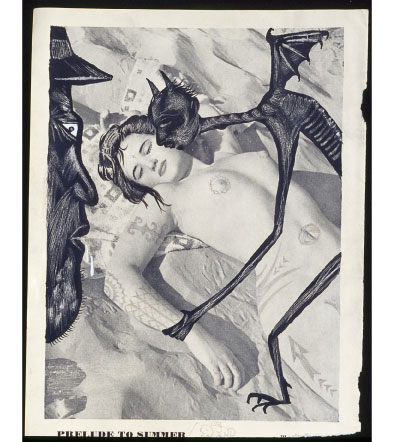
Sin título / Untitled (prelude to sumer), 2005

I first became friends with Dr. Lakra a few years ago when I went to his studio in Oaxaca to get a tattoo. Stepping inside, it was like walking into a baby devil’s playpen: there were toys and dolls and weird shit everywhere, stuff he used in his art. Books, paintings, postcards and stickers covered the walls. We cleared a space on the floor so he could get to work on my flesh.
Once finished, when he refused payment, I gave him a couple of poster-size photos of mine instead for him to intervene on, knowing that was one of his preferred mediums. He’d spent years tattooing skin, why not tattoo paper? At first, he just did it for fun, but soon the scrapbook turned into a unique body of work which I wrote about for PLANET several years ago. Now, RM Editorial has published a book of one of his collections of magazine interventions, titled Health and Efficiency.
With an all-black velvet cover and beautifully printed inside, Health and Efficiency is a sexy little book. The pieces are all derived from a pile of old nudist camp magazines he picked up in Brick Lane market in East London. In the original clippings nubile porcelain-white maidens pose puritanically next to ponds and lillies. But in Lakra’s versions they have sailor tattoos and get skewered by monochrome skeletons and mugwumps. On the surface, the tattoo-scratched images appear gaudy and comical, like doodles in a textbook. But if you engage them, the shapes and figures he inserts have a mythical underworld quality.
(more…)






 Facebook
Facebook Permalink
Permalink Digg
Digg Reddit
Reddit LinkedIn
LinkedIn StumbleUpon
StumbleUpon Tumblr
Tumblr












